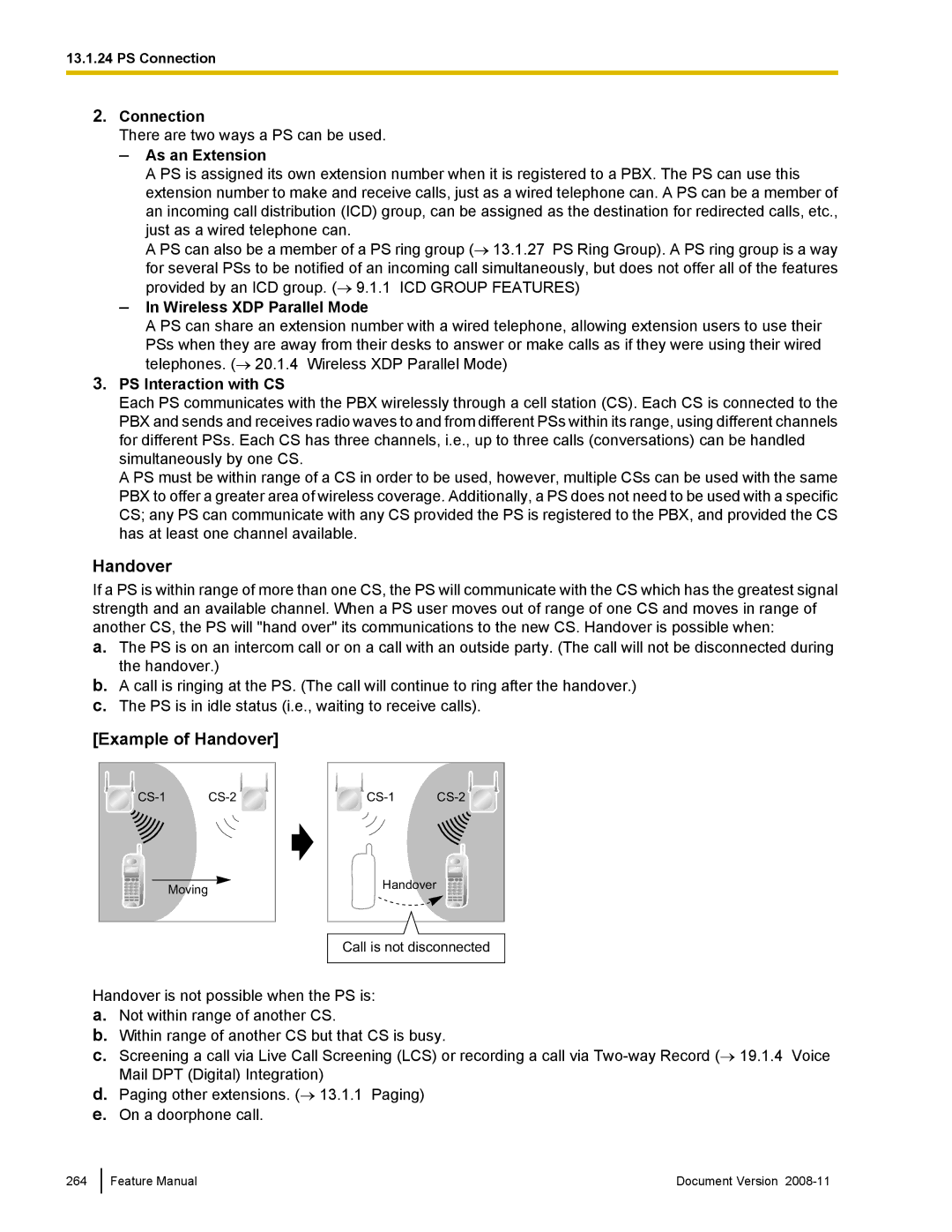
13.1.24 PS Connection
2.Connection
There are two ways a PS can be used.
–As an Extension
A PS is assigned its own extension number when it is registered to a PBX. The PS can use this extension number to make and receive calls, just as a wired telephone can. A PS can be a member of an incoming call distribution (ICD) group, can be assigned as the destination for redirected calls, etc., just as a wired telephone can.
A PS can also be a member of a PS ring group (→ 13.1.27 PS Ring Group). A PS ring group is a way for several PSs to be notified of an incoming call simultaneously, but does not offer all of the features provided by an ICD group. (→ 9.1.1 ICD GROUP FEATURES)
–In Wireless XDP Parallel Mode
A PS can share an extension number with a wired telephone, allowing extension users to use their PSs when they are away from their desks to answer or make calls as if they were using their wired telephones. (→ 20.1.4 Wireless XDP Parallel Mode)
3.PS Interaction with CS
Each PS communicates with the PBX wirelessly through a cell station (CS). Each CS is connected to the PBX and sends and receives radio waves to and from different PSs within its range, using different channels for different PSs. Each CS has three channels, i.e., up to three calls (conversations) can be handled simultaneously by one CS.
A PS must be within range of a CS in order to be used, however, multiple CSs can be used with the same PBX to offer a greater area of wireless coverage. Additionally, a PS does not need to be used with a specific CS; any PS can communicate with any CS provided the PS is registered to the PBX, and provided the CS has at least one channel available.
Handover
If a PS is within range of more than one CS, the PS will communicate with the CS which has the greatest signal strength and an available channel. When a PS user moves out of range of one CS and moves in range of another CS, the PS will "hand over" its communications to the new CS. Handover is possible when:
a.The PS is on an intercom call or on a call with an outside party. (The call will not be disconnected during the handover.)
b.A call is ringing at the PS. (The call will continue to ring after the handover.)
c.The PS is in idle status (i.e., waiting to receive calls).
[Example of Handover]
Moving | Handover |
|
Call is not disconnected
Handover is not possible when the PS is:
a.Not within range of another CS.
b.Within range of another CS but that CS is busy.
c.Screening a call via Live Call Screening (LCS) or recording a call via
d.Paging other extensions. (→ 13.1.1 Paging)
e.On a doorphone call.
264
Feature Manual | Document Version |
